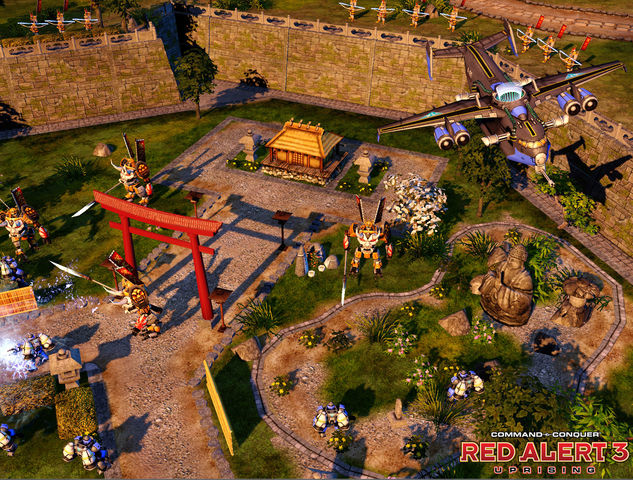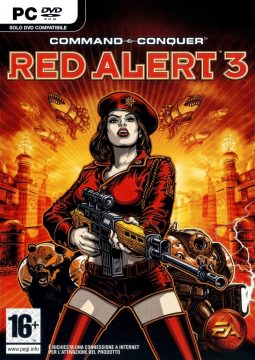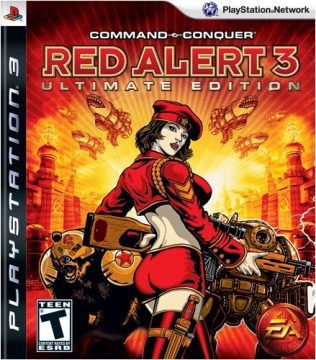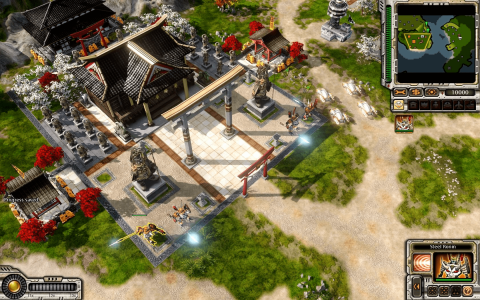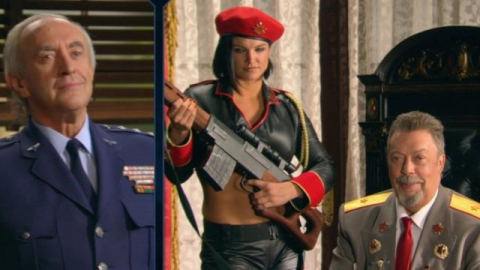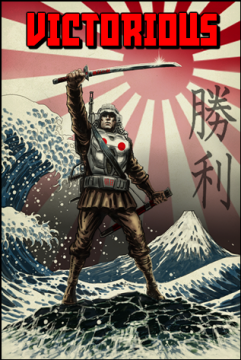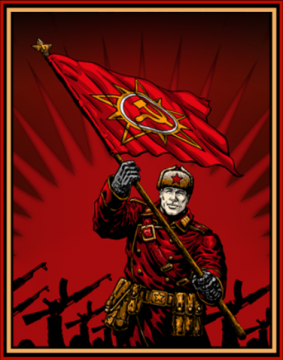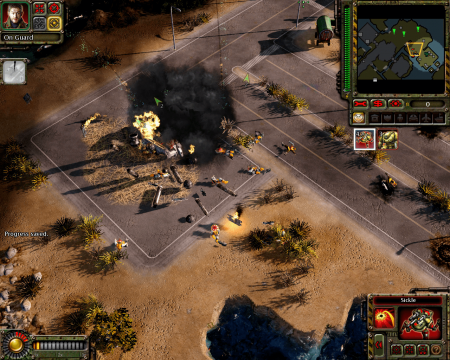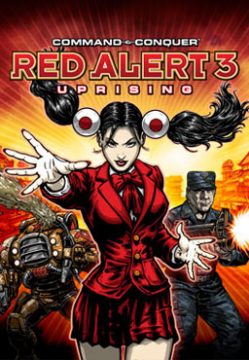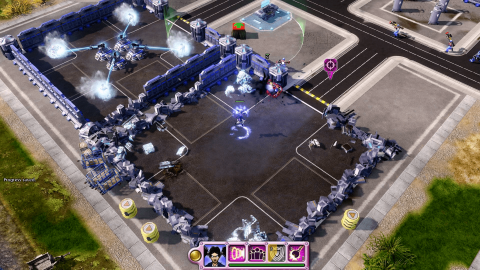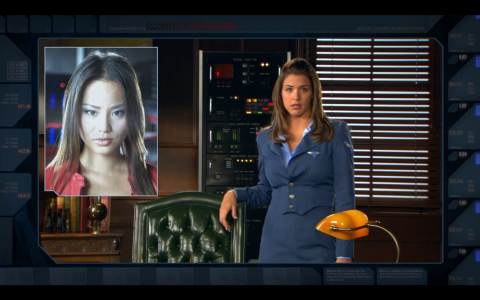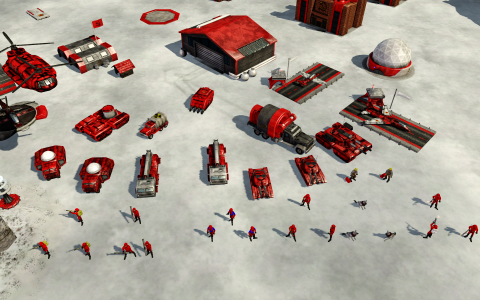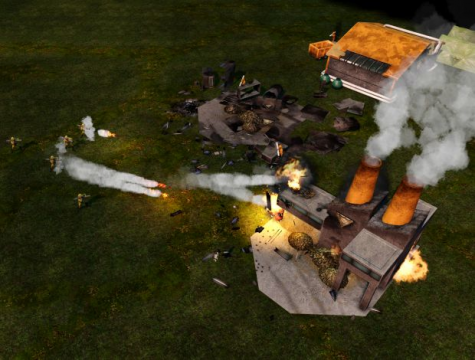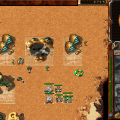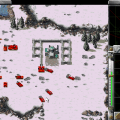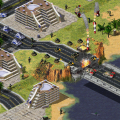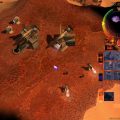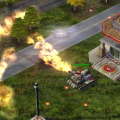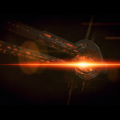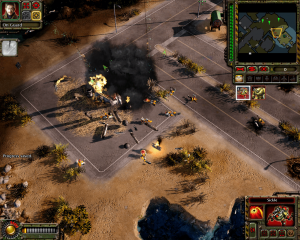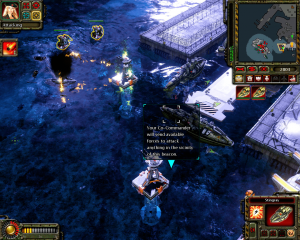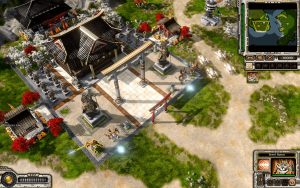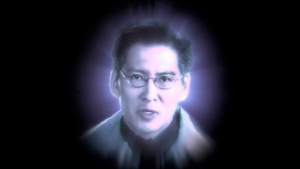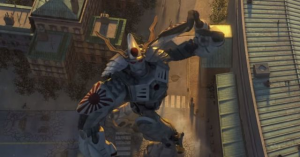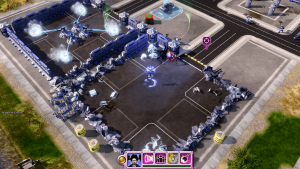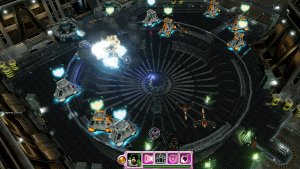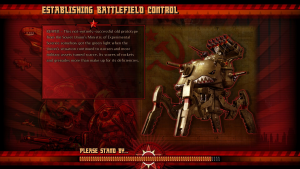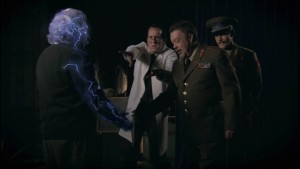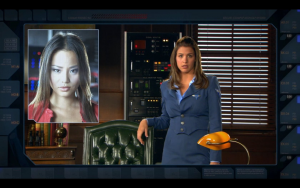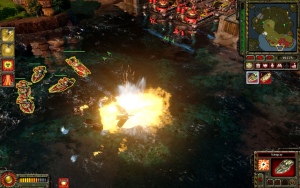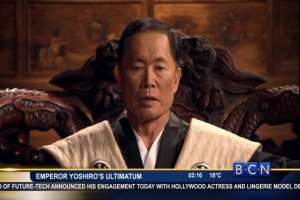- Command and Conquer
- Command and Conquer: Red Alert
- Command and Conquer: Tiberian Sun
- Command and Conquer: Renegade
- Command and Conquer: Red Alert 2
- Command and Conquer Generals
- Command and Conquer 3: Tiberium Wars
- Command and Conquer: Red Alert 3
- Command and Conquer 4: Tiberian Twilight
- Command & Conquer: Generals: Combat Cards
- Command & Conquer 3: Tiberium Wars (Mobile)
- Command & Conquer: Red Alert Mobile
- Command & Conquer: Red Alert (iOS)
- Command & Conquer 4: Tiberian Twilight (Mobile)
- Command & Conquer: Tiberium Alliances
- Red Alert OL
The Command and Conquer saga continued to meet solid success during the initial years following the fall of Westwood Studios. EA Los Angeles in particular, which originally included members from Westwood, had earned praise through the work done on Generals and Tiberium Wars. As time went on people wondered when the next Red Alert entry would come, if it’d ever be released at all. But while a new title in the esteemed series was unofficially announced as early as 2004, it wasn’t until February 2008 that Command and Conquer: Red Alert 3 was formally revealed to the public, which was then released for PC on October that same year; a Mac OS version came out on March 2009. Inevitably, comparisons were made with its predecessors. And instead of being seen as nigh-unanimously surpassing or equal to those classics, it was met with a rather mixed reception. While it’s not hard to see why it remains divisive, time and hindsight have vindicated the third (and as of this article last) main game in the series as good fun in its own right.
The story, though set following the Allied ending of Yuri’s Revenge, turns the whole timeline on it head to put it bluntly. The year’s 1986, and with Moscow itself on the brink of total collapse, Gen. Anatoly Cherdenko decides to put a secret Temporal Displacement Device into use. Along with Gen. Nikolai Krukov and Dr. Gregor Zelinsky (the man who created the machine), he goes back to 1927 with the aim of (and succeeding in) erasing Albert Einstein, the man who made the Allies invincible. After the group returns to the “present” – effectively creating a new timeline and averting the events of Red Alert 2 entirely – Cherdenko not only finds himself Premier but also in command of a triumphant USSR just as the Allied Nations are about to be pushed out of Western Europe. The sweet taste of victory, however, is cut short when news comes in of a sudden invasion followed with a video ultimatum by Emperor Yoshiro on behalf of a technologically advanced Japan, now calling itself the Empire of the Rising Sun. Even worse, with Einstein gone, so are most of the technologies he had a hand in creating (which include nuclear weapons) and leaving the Soviets and Allies alike open to attack. As an alternate World War III, also known as the War of the Three Powers, rages all over the planet, Dr. Zelinsky wonders what nightmares they may have unwittingly created.
Red Alert 3’s campaign mode, comprised of 27 missions (nine for each faction), takes over from that premise. Although continuing the tradition of you assuming the role of a nameless, rising star commander, and linear if diverging storylines, from the get-go it spotlights many of the features and changes from earlier entries in the series. The FMV and CG material, for one (with over an hour’s worth of footage, not counting in-game cutscenes) are in crisp HD compared to earlier Red Alert titles, but that’s not the only thing notable about them. These also feature a larger ensemble cast with many higher-profile celebrities (some of whom before they really became popular in TV or film) hamming it up in various roles. To name a few, there’s Premier Cherdenko (Tim Curry) and Dr. Zelinksky (Peter Stormare) for the Soviets, US President Howard Ackerman (JK Simmons) and Field Marshall Robert Brigham (Jonathan Pryce) for the Allies, and Emperor Yoshiro (George Takei) and Crown Prince Tatsu (Ron Yuan) for the Japanese. This isn’t getting to the host of officers and other characters who show up, including ladies such as Special Agent Tanya Adams (Jenny McCarthy), Lt. Eva McKenna (Gemma Atkinson), Dasha Federovich (Ivana Milicevic), Suki Toyama (Kelly Hu) and Yuriko Omega (Lisa Tamashiro); curiously, while Soviet sniper Natasha Volkova (Gina Carrano) was highly seen in promotional material, she barely appears in the FMVs.
While the missions themselves are for the most part as meaty, action-packed and immersive as in Tiberium Wars (with quite a bit of variety and dynamic. tightly written twists), for the first time in the series they’re entirely built around co-op. Although the concept was around back in RA2, now you have the option of either playing online with a human partner or having an AI co-commander – represented by faction-relevant characters also available in skirmish, like Allied Commander Giles Price (Greg Ellis) or Imperial Commander Shinzo Nagama (Bruce Asato Locke) – that you can give basic orders to, like holding positions or launching strikes. While intuitive, in practice, this could make playing a mission vary wildly in difficulty especially when your partner or co-commander performs poorly, while making attempts to complete objectives solo considerably harder. At its best, though, this fits well to the impression of being part of a wider war effort while also adding further replay value.
This also means that RA3’s large shift in tone and delivery towards cheesiness take center stage, even while paying homage to what came before. If RA2 and YR weren’t afraid to relish in humor and camp, these are all that’s taken into overdrive, permeating just about everything from the very first minute of the intro. The performances in the FMVs alone can make Gen. Carville look sedate at times, with the cast generally having such vibrant personalities – with President Ackerman, Premier Cherdenko and Emperor Yoshiro stealing the show every time they show up – that if this were any other continuity like the Tiberium timeline, they can come across as being varying degrees of insane; even the comparatively calmer Japanese characters wouldn’t be too out of place in a shonen anime or Kabuki show.
At the same time, the combatants in the War of the Three Powers are made far grayer than before. Barring certain, blatantly villainous characters, each faction is made to be sympathetic yet morally ambiguous in various degrees such that it’s hard to tell who the “good guys” really are as they all have some claim to it (often leading to quite a few infighting missions in the campaign). All while making each side as stereotypical and over the top as possible; along with the Soviets being as patriotic, Communist and backstabbing as ever (now with War Bears instead of Attack Dogs), the Empire is an extreme amalgamation of Imperial Japan with every popular interpretation of Japanese culture and an obsession with bushido and the Allied Nations proudly stand for democracy, apple pie and freedom (and the influential megacorp FutureTech). This extends as well to the way many of the ladies are dressed to resemble wartime pin-up models from the ‘40s if to the point that their uniforms barely resemble such (not to mention Yuriko Omega dressed up like a Japanese schoolgirl), or elements straight out of a Saturday morning cartoon, of which a weaponized Mount Rushmore and volcano bases are but a tip of the iceberg.
It’s not much of a stretch, then, to see why these have elicited such divisive sentiment among certain corners of the fanbase (especially those of the original Red Alert), or how all this (including the decision not to actually continue over from RA2) could backfire horribly. Yet by that same token, it garners genuine entertainment value that doesn’t just convincingly pull off “so bad it’s good.” It’s hard to ignore the attention to detail in world-building or how solid if not earnest the execution is, with the actors (even in the promotions) evidently enjoying themselves while hammily delivering a script with lines like “the enemy was thrusting deep into the motherland’s tender nether regions!” To say nothing of how even in the altered timestream, there remain a number of nods to its predecessors, whether it’s Dr. Zelinksy taking the place of Einstein, Soviet commando Natasha harkening back to both Volkov and Boris, certain storyline moments (Einstein’s “erasure” being a nod to Red Alert 1’s intro) or several familiar units (including the venerable Kirov Airship and Apocalypse Tank) making a return in updated forms. Thus, it’s not too outlandish to see how the series’ charm has managed to endure.
The three factions at your disposal are arguably the most diverse in the entire series. In terms of aesthetics alone, each of them is so varied and distinct from one another that they almost seem to come from different timelines. The Soviets have a blend of Russian aesthetics and Socialist iconography that’s filtered through a retro-futuristic lens reminiscent of 1950s B-movies. The Allies have a more conventional if very angular style that comes off like a caricature of Tiberian Dawn’s GDI and the USA from Generals. While the Empire of the Rising Sun goes for a blend of various elements of Japanese history with hyper-futuristic touches, resulting in a strange mix of the traditional and alien. Continuing the trend from RA2, however, these differences go much further than skin deep. The way each side builds structures, for instance varies considerably, with the Imperials being the most unconventional (deploying “Nanocores” that can unfurl into buildings anywhere on the map).
Meanwhile, though their tech trees are broadly similar enough that it doesn’t take too much effort to learn each one, there are a number of mechanics unique to each faction that play into their respective strengths. The Allied arsenal, for instance, emphasizes air superiority (seen through the Century Bomber and Apollo Fighter), flexibility (the use of Multigunner IFVs and Turrets) and powerful high-tech gear (such as Mirage Tanks and Cryocopters that can also shrink down enemies) that can be unlocked given the right “Clearance,” which contrast the Soviets’ preference for land domination (through Sickles, Terror Drones and V4 Launchers among others) and complete lack of espionage (lacking any equivalent to Spies or Shinobi). While the Empire has several units that can transform into myriad configurations (such as Jet/Mecha Tengus and Sea/Sky-Wings) that emphasize its penchant for versatility, with the use of stronger infantry (with basic Imperial Warriors able to hold their own against their equivalents) and psychic commando Yuriko Omega representing its efforts to compensate for small manpower. Add in a mix of returning mainstays (like the Iron Curtain and Chronosphere), distinctive campaign-only units (like the infamous Shogun Executioner), and creative new weapons of mass destruction to make up for the lack of nuclear weapons (including the Psionic Decimator and Vacuum Imploder), and the resulting cocktail is remarkably satisfying. Even the absence of playable sub-factions/countries is compensated by both the fun in playing each side but also how the corresponding campaign commanders feature as both AI opponents and allies, complete with FMVs.
The game’s audio-visual presentation, meanwhile, tries hard to give all the above justice, a task that it by and large succeeds in. Utilizing SAGE 2.0 (an update of the game engine used in Generals and Tiberium Wars), RA3 is by no means an ugly game to look at. Even with the more cartoonish bent in the overall art direction (from the colorful landscapes to the thick interface outlines when units are selected) there’s lot of attention to detail on units and structures alike that prevent the world from looking sterile; this goes right down the copious amount of animation seen, be it the salaryman-like movements of the Imperial Engineer or how the Conscripts manning Soviet Sentry Guns lazily drink vodka when idle. Combined with vibrant, blooming colors and a host of visual effects (be it the electrical fizz of Tesla attacks or the way Imperial buildings materialize from almost nothing), it manages to make the most out of an otherwise aging foundation; even to this day, the way it renders water in a very lifelike manner remains very impressive.
The voice work, on top of the main ensemble cast’s performances, is suitably fitting given the setting – filled with appropriately stereotypical accents, corny jokes and hammy overacting galore – that manages to add more character and some lunacy where it in less capable hands would otherwise fall flat, further helped by the inclusion of unique lines and responses depending on the situation; no longer just when under fire as in RA2, this can include being low on health or retreating back to base. As with Command and Conquer 3, there is no music jukebox, and the soundtrack is dynamic, based on the on-screen action. The music accompanying the ensuing battles is an eccentric mix of orchestral, techno and metal setpieces matching each faction, encompassing a wide range of cultural motifs from the bombastic “Soviet March” (inspired by Russian military marches) to the ethereal Ghost in the Shell-esque “The Might of the Empire” (for the Japanese side). As an added touch, Frank Klepacki returns to contribute a handful of tracks, including the third iteration of “Hell March” which as per tradition serves as the theme song.
Then there are the major tweaks to gameplay, which, in addition to elements introduced in more recent Command and Conquer titles (including garrison clearing), shake up the classic formula. Although RA2 first toyed with certain units having secondary abilities, in RA3 this applies to every single one on the battlefield, opening up new strategies on the fly; these could range from alternate weapon loadouts (like Soviet Conscripts switching to Molotovs) to special modes (such as Allied Athena Cannons being able to generate a defensive shield to protect nearby troops). Naval warfare, meanwhile, not only makes a return for the first time since Westwood’s day, but is made much more significant; not only can you build most structures on the seas but many maps feature substantial amounts of water, making opportunities to employ naval units all but inevitable (some of which like the Soviet Tesla Cruiser even being amphibious).
The “Generals system” from its namesake game is given a makeover in the form of a “Threat Meter,” this time with “security points” taking the place of rank promotions and the added wrinkle of color-coded “threat levels” (which accelerate veterancy and security point generation) that rise and fall over time depending on the degree of chaos in-game. These in turn are related to the support powers and faction-wide upgrades known as “Top Secret Protocols” that can make or break a match; unlocking the Soviet Magnetic Satellite, for example, allows you to beam up hapless enemy vehicles and ships into space (and could be enhanced), which also come back alongside space debris with the Orbital Drop power. Not all such changes are as significant, such as interface refinements (including the ability to better arrange unit formations) and the addition of new capturable tech buildings like dry docks and observation posts. Nor as welcome, notably the retuning of ore fields into stationary ore mines that constrain where refineries can be built. For the most part, though (alongside solid multiplayer support and the return of the Battlecast system), this helps give the old-school action not just a fresh coat of paint but also more in the way of variety. All the while simultaneously retaining much of the spirit of what made the past games what they were.
For all the evident effort put in by EALA, though, there still a number of issues that hold RA3 back from surpassing its predecessors. A particularly infamous one being is how it came with SecuROM, among its “conditions” being that users had to first activate the game online while restricting how many times it could be activated and installed afterwards. Put in at EA’s behest (ostensibly to deter piracy), this move backfired with some gamers boycotting the game for having such anti-consumer software; though SecuROM was ultimately removed in 2009 through a patch for the Steam edition (though not before a series of concessions), the controversy had lent some negative notoriety, albeit not to the degree of overshadowing the game itself. Meanwhile, the decision to have every unit have secondary abilities means that making the most of said abilities (some of come off more gimmicky if not less useful than others) tends to have you be more micro-intensive in commanding troops, which can hamper pacing and distract from the bigger picture. On top of pathfinding flaws, some performance glitches and the aforementioned ore mines, a number of reviewers at the time noticed how the naval warfare aspects (though well integrated and executed) were also at points excessive, with maps that feature substantial water but at the expense of sizable landmasses, thus potentially limiting available strategies. And even with the changes made to the classic formula – right down to how engineers can no longer repair garrisonable structures – game critics remarked how it’s not innovative enough, being seen as something of an outdated relic in a period when MOBAs were gaining prominence, and RTS like Supreme Commander, Company of Heroes and World in Conflict (the latter coincidentally involving a “Cold War gone hot” premise) were seen as the future. It’s not too hard therefore to see why such faults seem to be amplified when being compared to the Westwood-produced entries in the series, which aren’t helped by the high standards and precedents set by those works. Which is to say nothing of how the shift in tone, and even the inclusion of Japan, still elicits debate and divisive opinions among certain segments of the fandom.
Even in light of the flaws, these do not so much make RA3 the black sheep in the series so much as more of a diamond in the rough. These didn’t stop reviewers from giving it very favorable marks – winning the Academy of Interactive Arts & Sciences’ “Strategy/Simulation Game of the Year” award for 2009 – with many citing its campy tone, solid multiplayer and gameplay, integration of coop and naval combat, and entertainment value. Nor did it stop it from being popular enough to be brought over to the Xbox 360 (November 2008) and PlayStation 3 (March 2009) with similar success, both utilizing an updated version of the intuitive console interface seen in the Xbox 360 port of Command and Conquer 3: Kane’s Wrath. This includes a radial menu, activated by the shoulder buttons, that allow you to quickly build structures or units, among other functions. The “Ultimate Edition” for the PlayStation 3 port in particular even featured among others new multiplayer maps and exclusive “Command and Conquer TV” programming, including Battlecast Primetime. Performance wise, they cap out at 30 FPS and suffer from significant vsync issues when scrolling, but as far as RTS ports, it’s still one of the best of its kind.
While there were similar if more mixed sentiments from long-time fans and newcomers alike back then, the game’s reception among the fandom has grown increasingly positive overall over the years since. This has been further helped by how its multiplayer, even with the shutdown of the Gamespy servers that originally hosted it, has since been sustained by the fan-supported C&C: Online. While it may struggle to meet the lofty expectations set by its forbears, on its own merits it more than delivers. Whether it’s the memorable characters, campy yet distinct setting, solid gameplay or the sheer fun to be hand, there’s little doubt that that this is a Red Alert title worthy of the classic pedigree.
There’s also a bittersweet tinge, however, in that (as of this article) it’s the last main entry in the series, and the last in the Command and Conquer franchise that would receive any positive reception. Though like its legendary prequel, it wouldn’t be a proper Red Alert game without an expansion pack.
Command and Conquer: Red Alert 3: Uprising
Just as Tiberian Sun had Firestorm or Red Alert 2 had Yuri’s Revenge, Red Alert 3 having its own expansion pack following its success was almost a certainty, befitting franchise tradition. Within less than a year after the base game’s launch, that expectation was proven when EALA released the stand-alone expansion Command and Conquer: Red Alert 3: Uprising on March 2009 for the PC. It soon became apparent, however, that this wasn’t quite what reviewers or fans had in mind. But while it met even more of a mixed response at the time and not as polished as other expansions, there’s still much to be said about what some may consider a flawed yet fitting curtain call for the franchise.
Uprising continues on from the Allied ending of RA3. Several months have passed since the end of World War III, a la the War of the Three Powers. The Allied Nations (and the increasingly powerful FutureTech Corporation) continue celebrating the triumph of freedom and democracy, but all is not what it seems. With Emperor Yoshiro dead, Crown Prince Tatsu finds himself the new sovereign leader of a demilitarizing Empire of the Rising Sun, plotting Japan’s revival even while feigning support for the Allied “Office of Occupational Forces.” Meanwhile in the shattered USSR, diehard Communists and Soviet military remnants led by Dasha Federovich had formed a growing resistance movement known as the Soviet Underground, with the intent of restoring their motherland to glory and driving out the Western capitalists overseeing the “transition.” They have good reason to, as behind the scenes FutureTech and European Union President Rupert Thornley have been conducting insidious if not immoral experiments involving the megacorp’s “Sigma Harmonizer” project. Amidst all this, the infamous Yuriko Omega escapes Allied capture, leaving behind a trail of destruction. Only time will tell how it all unfolds.
Compared to the main game, Uprising’s campaign mode is significantly smaller (16 missions total), though no less interesting. These mini-campaigns are comprised of three missions each (four for the Soviets), the majority of these having you reprising the same roles as in the original in vaguely interconnected storylines that may or may be mutually canon. Although the co-op aspects are nonexistent this time around, the missions remain fairly lengthy and challenging affairs, with a host of objectives and their fair share of scripted spectacle albeit not as memorable; while not coming off as a lazy afterthought, they can seem more like an epilogue than a fully fleshed-out continuation unlike the Allied and Soviet storylines in YR. Once again, the presentation is top-notch, with a good deal of the original ensemble making a return alongside new characters like EU President Thornley (Malcolm McDowell), Dr. Shinji Shimada (Vic Chao); some of the other characters, however, such as Allied Commander Douglas Hill (Ric Flair) and Ukrainian freedom-fighter Vera Belova (Moran Atlas) don’t appear in the campaign cutscenes at all. The most intriguing aspect, though, would be the Yuriko Omega mini-campaign, which more than compensates for the relative brevity. Unlike the others, this turns RA3 into more of a third-person RPG – with multiple, upgradable abilities, a focus on controlling a single unit, a much more personal story arc and even an entirely different interface – with you playing as the psionic weapon herself from her dark origins to her exacting revenge on those who wronged her (including her “creator”). It’s a sharp departure from the conventional Command and Conquer experience, if somewhat reminiscent of a few Red Alert 1 missions, but these prove to be a remarkably solid romp that deserves to be further built on while help make Yuriko one the more memorable among the cast.
Then there’s the “Commander’s Challenge” mode. This new addition is very reminiscent of the “General’s Challenge” from Zero Hour, but with a few new twists up its sleeve. Set roughly around the same time as the mini-campaigns, you’re put in the role of a FutureTech officer tasked by company spokesperson Kelly Weaver (Jodi Lyn O’Keefe) with acquiring data and technology from all three factions amidst the post-war turmoil (complete with FMVs). Encompassing 50 unlockable main missions and side-missions, this task has you squaring off against nine commanders from all three powers (old and new), each match being a unique scenario. At first though, while starting off being able to choose what side’s arsenal to deploy, you’re stuck with basic, low-tier lineups. Winning battles, however, not only progresses the vaguely canon storyline – with many of the commanders becoming visibly more frustrated in being thwarted, the Soviet ones like Oleg eventually catching on to FutureTech’s scheme – but also unlocks technologies in the form of units and structures (usually those featured in their respective missions) that can then be used against those foes; this is counterbalanced, in turn, by the growing difficulty in successive battles, eventually reaching large-scale bouts and blatantly unfair odds.
Adding further replayability is its achievement system, which incentivizes finishing a challenge under par time for 100% completion (while also encouraging more efficient strategies) and the incorporation of the “Red Alert button” that appears once the “Threat Meter” is filled; a cut feature for RA3 proper, activating this button grants a large sum of funds and turns every unit under your command to maximum veterancy, but comes at the expense of making par time completion impossible among other setbacks. In practice, this can occasionally result in bouts of frustration depending on which faction is used or what units you may or may not have – this may in part explain the “up to 30 hours of additional gameplay” line used in the advertising for the expansion – but it does make bring back much of the wackiness seen in the base game. Though in so doing, it also highlights another glaring aspect.
The direction of Uprising, as it’s become apparent, is strangely inconsistent. While not completely jarring, the mini-campaigns (especially the Soviet and Yuriko ones) are considerably more serious in tone, with the FMVs (totaling about 30 minutes in material) having less humor in them, though no less campy acting, than in the main game. Indeed, this more sedate if darker shift hearkens back to the original Red Alert with certain plot points (like human experimentation) playing out more like Stalin’s atrocities than Yuri’s evil hijinks. By contrast, “Commander’s Challenge” not only brings the cheesy, demented atmosphere front and center, but runs with it. From the increasingly over the top scenarios to the hammy acting (like Ric Flair’s gung-ho grandstanding), it comes off much closer to what gamers expected of an expansion to RA3. While “identity crisis” may be too much of a hyperbole, it’s not hard to see then how such seemingly jarring contrasts could lead to that sort of conclusion, as though EALA was toying with future directions for the series. Yet in spite of that, that inconsistency doesn’t break what suspension of disbelief so much as it adds more weight and complexity to the setting, further helped by the generally solid performances and production values. While Yuriko’s arc in particular seems like it’d be for fitting for the Tiberium timeline or an anime like Efren Lied in terms atmosphere, as something of a proof of concept it also demonstrates just how open the Command and Conquer franchise is to different genres if done right.
While gameplay by and large remains the same, Uprising does bring in a number of other additions. For one, there are 11 new playable units, which combined with more minor tweaks help further make each of the already distinct sides more divergent and even more powerful. These units vary from updated versions of old mainstays (such as the Allied Cryo Legionnaires and Soviet Desolator infantry) to fresh ideas inspired by each faction’s respected cultures (like the Imperial Steel Ronin and Allied Future Tank X-1); these aren’t even getting to the expensive but absurdly overpowered weapons of mass destruction made available, such as the Soviet Reaper (a lumbering mechanized walker based on cut RA2 and RA3 unit ideas), the Allied Harbinger Gunship (a large flying gun platform that can switch between potent “Collider Cannons” and a chain gun) and the even more ludicrous Giga-Fortress for the Empire (a massive flying/naval war machine that can level whole regiments and bases even with little support). Meanwhile, there are 30 new maps that are available for skirmish, with new environments and layouts to wage war on. Combined with the “Commander’s Challenge,” the already impressive graphics and some extra music for the soundtrack, with Frank Klepacki contributing a few tracks for the Soviets, and you have an expansion pack that, especially for its low price ($19.99 on average through Steam), has much to offer for any Command and Conquer fan.
There are, however, a number of flaws that drag this down. On top of the aforementioned inconsistent tone, the final product can come off at points as a bit underwhelming if not incomplete, whether it’s in the small number of missions for each mini-campaign or in how the new content would have been more substantial given more time. The game also lacks online or LAN multiplayer of any kind, due in no small part to how unbalanced the various factions have become thanks to the new units. While the AI can be more than a match especially in higher difficulty settings, it can get predictable if not repetitive over time, which in addition to the lack of multiplayer could limit replayability. These aren’t to ignore the pathfinding issues and bugs seemingly carried over from RA3, or the lack of the co-op dynamics seen previously.
Though Uprising was nominated for the 2010 BAFTA Game Awards for “Best Strategy Game,” it comes as little surprise why games journalists at the time of its release gave rather mixed reviews. Recurring comments from critics include how only die-hard fans would make the most out of the expansion and how it’s not innovative in any real sense, particularly in a time when old-school RTS were seen more as dinosaurs being left behind by change. While similar sentiments were initially expressed by consumers, since then it’s come to be seen more fondly among both fans and newcomers alike.
The mixed criticisms certainly didn’t stop a variation of it, known as Command and Conquer: Red Alert 3: Commander’s Challenge in Europe and Ultimate Edition in North America, from being ported to Xbox 360 and PlayStation 3 on September 2009. Nor the release of an RTS spin-off for mobile devices, Command and Conquer: Red Alert Mobile that same year (presented as prequel to RA3 with elements of RA2), though the iOS version was removed from Apple’s App Store in 2014. As even with its faults and not being able to match RA2’s counterpart, few would deny how EALA’s efforts (in spite of EA) have resulted in a fun, largely polished and welcome entry into the Red Alert series. All the while, and for one more time, showing the potential of what Command and Conquer could have been.
In hindsight, however, this could be seen as a dignified curtain call, with RA3 being seen among the fandom at large as the proverbial swan song, especially compared to what came soon after. By 2010, Tiberian Twilight (which coincidentally was revealed only a few months after Uprising’s launch) all but killed the long-standing saga with poor reviews and an even more abysmal reception among gamers. With the entire franchise soon falling into an indefinite limbo, there was no reliable word on any new, proper Red Alert entry. Until April 2018, when Red Alert Online (a mobile game by Tencent in association with EA), was revealed for China’s market. This was met with revulsion when it soon became apparent from posted footage and reception among Chinese fans that it’s shaping up to be more of an opportunistic mobile knockoff akin to Clash of Clans. Combined with reports from CNCNZ of flagrant copyright infringement – including assets from varied sources like Blizzard Entertainment, Games Workshop and Activision – it served to validate suspicions of how little EA seems to care for an RTS brand that helped define and popularize a genre. All the while foreshadowing the even more venomous backlash surrounding the reveal of Command and Conquer: Rivals in E3 2018. Despite PR efforts (with appeals to give it a chance), fans and particularly those who played it remained less than satisfied with the resulting product, especially with the revelation of loot boxes, microtransactions and general “pay to win” elements being present; regardless of Rivals’ quality in isolation, it could be said to have been less “C&C for a new generation” and more akin to EA parading a dead corpse and hoping to milk profit in the process. It wouldn’t be beyond the realm of possibility, then, to speculate whether it may have been better had the corporation simply left it as just another neglected footnote in its portfolio.
Sufficed to say, the odds of an actual fourth Red Alert game remain open (if unlikely), as are the chances of the Command and Conquer brand being successfully revived on an official capacity. As with the Tiberium and Generals continuities, the fans remain committed to keeping the legacy alive. And in the case of RA3, that also means mods.
Fan Showcase: The Red Alert
Compared to the modding community for its predecessor, the one for Red Alert 3 isn’t as well known or popular. The resulting fan works, however, can be just as impressive, especially with the SAGE 2.0 engine to build on. One of the most well-received to have come out, though, is a total conversion mod simply titled The Red Alert. Perhaps it’s fitting, then, that it also brings the entire series full circle.
Released in 2011 by mod team CnC Labs (of The Forgotten fame), The Red Alert converts RA3 into Red Alert 1 but goes even further in bringing the one that started it all firmly into the 21st Century. Long-time fans who have played the Westwood original and its expansions would not only find just about everything very familiar but also rendered faithfully to the old spites while also adding much more detail than what was possible before; this can be seen from the smoke bellowing from power plants to how vehicles like Allied Light Tanks (themselves having crisp textures instead of simple colors) can recoil from firing their weapons. As an added touch, even the visual effects are replicated and enhanced, be it the launch of a Soviet V2 missile and its resulting explosion or the Chronosphere being activated. Such is the effort put that it manages to make the already aging engine even more versatile than it may seem.
The audio and gameplay from the original Red Alert are likewise brought over virtually wholesale. Among the most notable examples of this in action include how every single sound effect, voice track (right down to the Russian accents and interface quotes) and Frank Klepacki piece is present, almost exactly as they were back in 1996 without sounding too dated. The ore mines from RA3 – and with it, their constrained resource-gathering dynamics – have been replaced by the recognizable sight of ore and gem fields that function just as they did in Westwood’s work, while countries are similarly brought back as sub-factions with passive bonuses reminiscent of their original counterparts. This isn’t to say that it’s an 100% recreation, as similarly to OpenRA it manages to wed the old assets with improvements that have been introduced into the series over the years. As it turns out, RA3’s interface, garrisonable structures that could also attack aircraft, and more refined support powers (to name a few) complement rather well with the time-tested formula in its original form, which could be seen even in the several reimagined battlefields (based on various classic maps) that come included with the mod. While there are some limitations – there are no campaign missions available (even in the current “Version 1.2” released in April 2013), nor is a fully-rendered Volkov anywhere to be found – the end result still makes for a solid, fast-paced experience, one that could be shared through online multiplayer.
The Red Alert, of course, isn’t the only success story to be had, not when various projects are still coming out of the woodwork. For instance, there’s Red Alert 3: Revolution, which enhances RA3’s core gameplay while keeping the zaniness of the settings. Then, there’s the Eastern Loong mod, which introduces a fully playable and realized Chinese faction; coincidentally it also demonstrates how the game – and by extension, Command and Conquer – has a loyal following among Chinese gamers. Which isn’t getting to more ambitious works in progress like the Generals: Evolution mod, which seeks to bring the Generals universe back to life. What all these have in common is how dedicated fandoms can breathe new life into existing works, pushing the limits of what the original developers would have imagined. But it’s also a demonstration of how, from mods to multiplayer servers and open source engines, the fans have proven themselves to be capable of carrying the embers alive even if EA couldn’t.
It’s a welcome reminder that, as with the franchise as a whole, the long pedigree that spawned Tesla coils, Yuri and War Bears isn’t over just yet.
